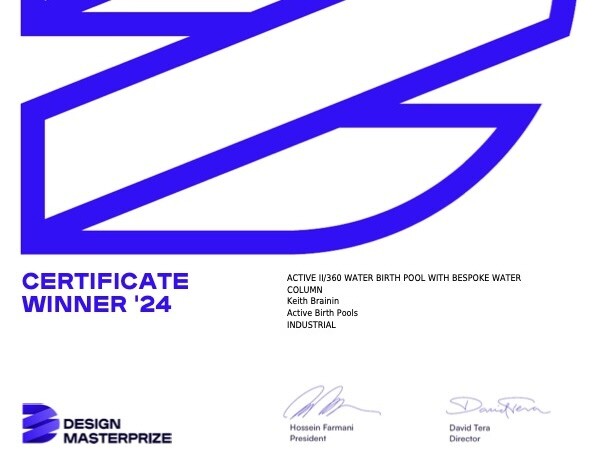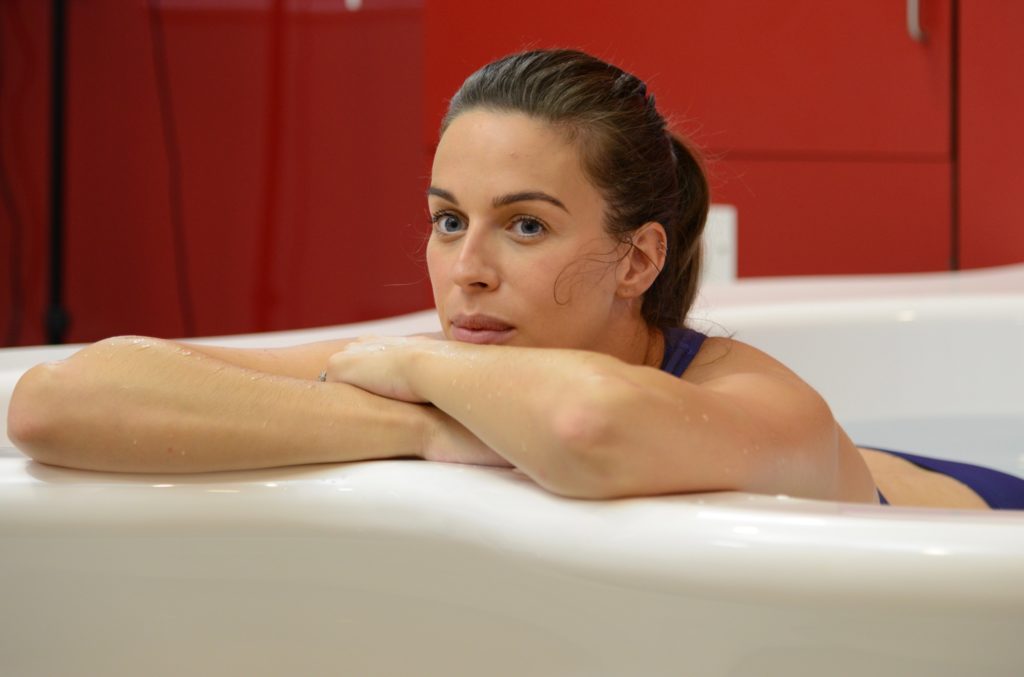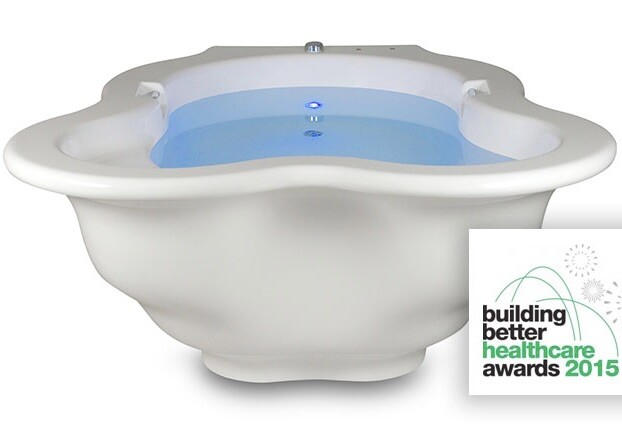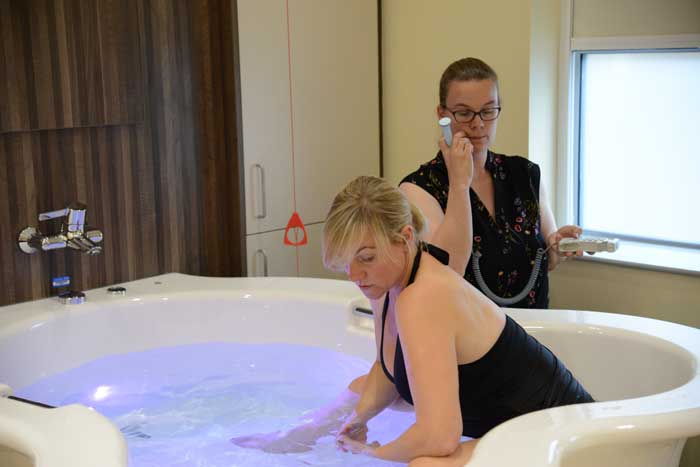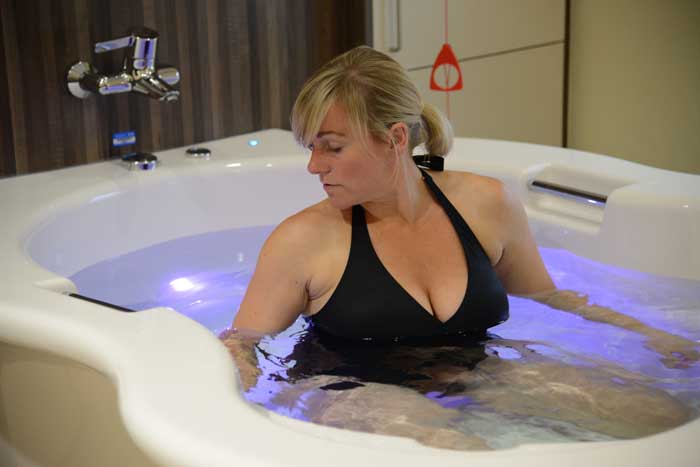A new study shows that birthpools can ease the pain of labour.
So why, asks Janet Balaskas, are some women denied access to them?
(Observer newspaper January 28, 2004)
In the late 1970’s most women laboured in large consultant units, semi reclining in bed, strapped to electronic foetal heart monitors and subject to an avalanche of routine obstetric interventions. Of course any sensible women is only too grateful for modern obstetric care when there are problems.
However we only have to look at the statistics our hospitals today (22% of babies in the UK were born by Caesarean section in 2002 [www.birthchoices.com]), to see the heritage of this complete misunderstanding of the nature of birth physiology and the kind of environment and care women need to support it.
It’s not surprising that women the world over rebelled against the medical model. When I founded the Active Birth Movement in the 1980’s in North London it was about women reclaiming the right to labour and give birth in upright positions and in an environment which is more conducive to a natural birth.
Active Birth turned women from passive patients, recipients of a medicalised birth to active birth givers. Gradually, this has been influencing change in the provision of midwifery care and birthing rooms that are designed to facilitate more women being able to be mobile and to have a natural active birth.
While at first the freedom to move and choose comfortable upright positions was paramount – the possibility of getting into a pool of warm water in such an environment adds a number of benefits which can no longer be ignored by the managers and providers of maternity services.
News this week of a study by Southhampton General Hospital confirms what women and midwives all over the world have been saying for two decades about the benefits of using a birth pool during labour.
One of the main reasons that women choose to use water during their labour is for pain relief. There is no doubt from what women themselves and experienced midwives say, that immersion in water can provide dramatic relief of discomfort for a high proportion of women and an alternative to the epidural.
The Southhampton study involved 100 first time mothers who were making slow progress in labour and revealed that those who were given a chance to use a birth pool progressed better than those getting standard care. Less than half (47%) needed an epidural, compared to 66 % of those who did not use a birth pool.
This finding is not entirely new. A review of three randomized control trials found that there was a significant decrease in the use of medical pain relief in the women who used a birth pool in labour – indicating,
Nikodem, V.C., Immersion in water during pregnancy, labour and birth, The Cochrane Library, Oxford,1998, issue 1.
Other studies have confirmed the pain relieving effects of water.
For example a clinical audit of waterbirths carried out in five birthing units in England, reported a dramatic reduction in the use of analgesic drugs such as pethidine amongst pool users.
The study cited below found that only 3 per cent of women who used water in labour used pethidine as well, compared to 60 per cent of women who laboured on land. A reduction in the use of such narcotic drugs is welcomed by all concerned, as its is now widely recognized that they can have a depressive effect on both mother and baby’s central nervous system and may lead to a variety of complications.
Garland, D. & Jones, K. Waterbirth, supporting practice with clinical audit. MIDIRS Midwifery Digest (September 2000) 10:3, pp 333-336
While women need to be aware that using a birth pool can make it significantly easier to manage the pain it does not take away the pain entirely and there will be some women who may still need medical pain relief. Experience has shown that the best time to enter the pool to get the most benefit, is about midway through labour at about 5 or 6 cms dilation.
This is generally around the time that many women choose to have an epidural as labour intensifies. Getting into the pool at this point offers an alternative. Many women find that the support of the water allows them to relax much more deeply, to feel much more comfortable both during and in between contractions and to have an increased sense of privacy.
There is a noticeable calming of stress levels and the abililty of the mother to cope with her labour can be transformed. At the same time the water seems to promote more effective contractions, so dilation may progress more rapidly while the mother is relaxing in the pool.
How water birth originated
There have been accounts of women labouring and giving birth in water mostly amongst peoples living near a source of shallow warm water such as the South Pacific islanders. In most traditional societies the rituals and practices of childbirth have, until recent times, been a matter of secrecy and handed down through generations of women. There are oral traditions of similar practices among the Maori, the Indians of Central America, and the Ancient Greeks and Egyptians.
In 1805, the first account the use of water in Europe was documented. A French woman, who had laboured for two days before being encouraged to get into a warm bath by her enlightened doctor then progressed to give birth to a healthy baby within an hour.
Sadly, for millions of women at the time there was no recognition of the importance of this event.
Aside from this, there are no accounts of a tradition of childbirth in water in Europe or other northerly regions. The reason for this may be a simple matter of climate and plumbing. Only with the widespread availability of artificially heated water and portable and installed birthing pools in comparatively recent times, has giving birth in water become a real option for women anywhere in the world.
Waterbirth was pioneered in the 1960’s by the Russian researcher Igor Tjarkovsky Using a large aquarium he installed a glass tank in his own home in Moscow in which many mothers gave birth . Stunning photographs of these extraordinary births were published in the west and inspired the first water births.
For today’s generation of mothers, the key figure in the use of water for labour and birth is the French obstetrician Michel Odent.
In 1977 Odent installed a pool in the hospital at Pithiviers , not with the idea of promoting birth in water, but primarily as an additional option for pain relief and rest during long or difficult labours. He has said ‘the reason for the birthing pool is not to have the baby born in water but to facilitate the birth process and to reduce the need for drugs and other interventions.’
Odent published his findings in the Lancet and his recommendations in this article provided the basis for the first midwifery guidelines for waterbirths.
Odent, M. Birth under water. The Lancet. December 24/31, 1983. pp 1476-1477
Inspired by news of what was happening in Moscow and France, the earliest waterbirths in the West took place at home in pools that were often improvised by the couples themselves and attended by independent midwives.
The parents created birthing pools using any large waterproof container they could find – including refuse skips, cattle troughs, inflatable paddling pools or garden ponds lined with a plastic sheet. This happened simultaneously in several parts of the world and began to cause ripples in the world of obstetrics.
When reports and images of the first waterbirths were published, the world looked on in amazement. The women who chose this way of birthing and their attendants were variously regarded as crazy, deluded, foolhardy or inspired. The medical establishment rallied to condemn or at least call the practice into question, citing theoretical risks of infection and fears of the baby drowning.
Such fears have been largely appeased by the work of Dr Paul Johnson, neonatal physiologist at the John Radcliffe Hospital, Oxford. His research on the mechanisms that trigger breathing in the newborn provided scientific confirmation of the safety of birth underwater at body temperature for babies who are not at risk.
He described how the baby is protected against the possibility of breathing while underwater in the few seconds between emerging from the birth canal and being lifted out of the water. This response is known as the ‘dive reflex’.
Johnson, P. Birth under water – to breathe or not to breathe. British Journal of Obstetrics and Gynaecology, vol 103, no 3, March 1996. pp 202-208
In 1999 Ruth E. Gilbert and Pat A. Tookey of the Institute of Child Health, London, published a hugely important study in the BMJ that effectively provided the ‘green light’ for labour and delivery in water. It was a study of the outcomes for all babies born in water in the UK in a two-year period between 1994 and 1996.
A total of 4,032 waterbirths were included in the study (about 0.6 per cent of all deliveries). All 1500 consultant paediatricians in the British Isles were asked if they knew of cases of perinatal death or admission to special care within 48 hours of labour or delivery in water. The study showed that there was no increased risk to health for babies born in water as compared with babies born to other low-risk women on land.
Since then a burgeoning of interest in the use of water in labour in the UK has led to the development of a unique concentration of knowledge and expertise within the mainstream maternity system.
Positive encouragement to the use of water in labour and childbirth has come from the Royal College of Midwives, which recommends that midwives should develop the knowledge and skills to assist women at a waterbirth .
Water labour and birth is an option which is limited to ‘low risk’ women having an uncomplicated birth following a healthy pregnancy. In the UK the issues of safe practice have been addressed by the health authorities, Royal College of Midwives, midwifery supervisors and one or two obstetricians.
A significant body of research studies and several important surveys have been undertaken. Development has been more carefully and diligently monitored than many of the obstetric procedures that are widely used.
Against this backdrop, more of the managers of maternity services in the UK are increasingly being persuaded that the option of using water in labour and for birth should be available to all women.
The extent of the use of birth pools in the UK increased . Pools are now used in hospitals as well as independent birth centres, some of which specialize in waterbirths, and in the community at home births with both independent and NHS midwives.
The Edgware Birth Centre in North London is an example of a new type of forward-thinking NHS birth unit. It has two pools and typically 70 per cent of women who give birth at the centre use water during labour and 50 per cent give birth in water. Since it’s inception outcomes show far fewer interventions than for low-risk births at a conventional hospital birth unit. This is a model of care which would transform our maternity services if widely adopted.
In October 2000 the UK’s Royal College of Midwives estimated that 50 per cent of maternity units provided facilities for labour or birth in water. The usage of pool varied between 15 and 60 per cent, which may be an indicator of the significance of the role of the midwife in supporting and encouraging women to consider the use of water. Since then the number of UK hospitals and birth centres with installed pools has risen to closer to 60 per cent.
However, that does not necessarily mean that the pools are being fully or enthusiastically utilized or that the pool is always available. It’s not uncommon for women to be discouraged from using them or to be told that trained midwives are not available. Sometimes stringent protocols around the use of a pool can limit it’s usefulness and frustrate both mothers and midwives. Women who want to use a pool are often also told that this may not be possible if the pool is already in use.
It’s time for such problems to be addressed and for all women to have the possibility of using a birth pool wherever they choose to give birth. Water birth is one of the greatest innovations in childbirth of our times and can no longer be regarded as a passing fad.
The use of epidurals today has reached epidemic proportions and contributes significantly to the high caesarean and intervention rate and is also very costly, requiring a high level of expert attendance. The simple expedient of a pool of warm water is by now a proven way to confine the use of epidurals to those women who really need them and improve safety and quality of the birth experience.
Giving birth in water can be a wonderful memorable and empowering start to motherhood. At the Active Birth Centre we run a nationwide portable pool hire service and also provide installed pools to hospitals. We get feedback from the women and midwives who use our pools which is largely positive and often glowing. The news from Southampton comes as no surprise to me and is a welcome endorsement of the kind of experiences I have been hearing about for many years.
Women’s comments from questionnaires we send out to women who hire our pools.
‘I waited to get into the pool until I was 6 to 7cm dilated. Once in the pool labour progressed rapidly and just 35 minutes later I felt the urge to push. Our baby was born three and half minutes later. The pain was so well controlled that I couldn’t believe tat the birth of our daughter was imminent, neither could our fantastic independent midwife.
The water was so relaxing; this was my only form of pain relief. This birth was so different from my previous experience when I had our son without access to a pool. It was fantastic that our baby daughter entered the world calm and relaxed with no complications – a wonderful experience for all of us.’ “I felt my body relax immediately on entering the water and simultaneously recognized that I was pushing very comfortably.”
“My birth experience was wonderful overall. Helped by excellent midwives who “managed” the situation very well. I was relaxed and confident in the pool and up to the last ten or so contractions, I felt totally happy and in control… Having the pool gave me my own space and enabled me to decide who and when I wanted physical contact with… The water helped enormously with the pain, mainly due to the ease with which I could move about during contractions and the support it gave me whilst resting…”
” I got in the pool at about 5 cm dilated. The relaxation through my body was immediate and the ‘floating’ weightlessness was lovely. The water made it very easy for me to change positions at the start of a contraction. The contractions were stronger which was a bit of a shock but I could feel and visualize my cervix dilating much more easily”
“The sense of weightlessness in water gave me enormous relief. My birth was a fantastic experience and I don’t think I would have coped so well without the pool.”‘Labour progressed steadily for five or so hours, and then my waters broke with a gush. That was when I felt I wanted to enter the pool, which made me relax completely. My baby’s head was delivered five minutes later and I could see her hair floating. I then “breathed” her out and she swam into my arms. It was a wonderful experience and such a calm entrance to the world.’

